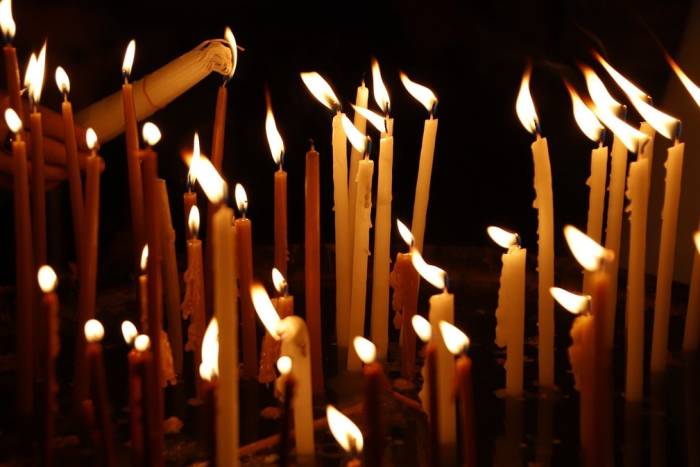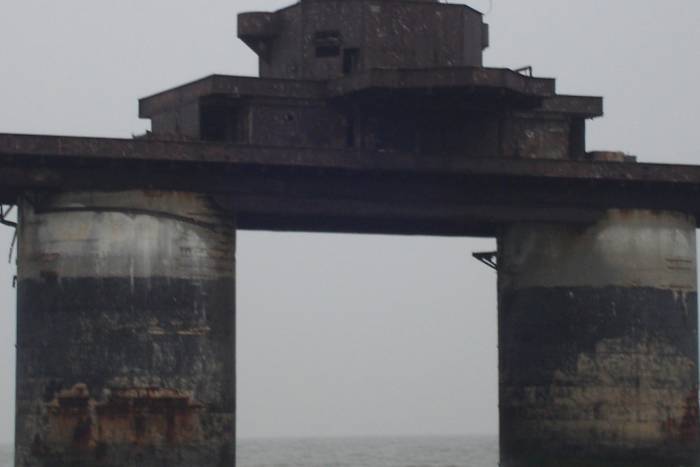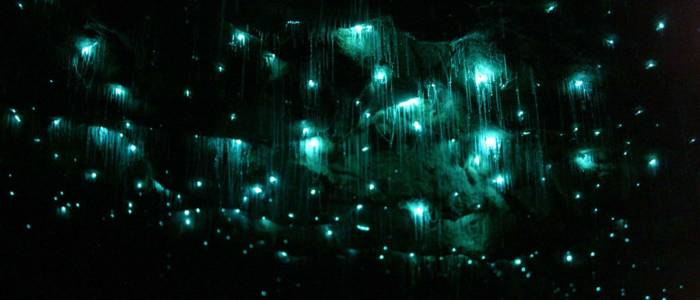The Art of the Spirit: 3 Churches Created by Virtuoso Artists
These temples created by Monet, Rothko and Turrell honor the fundamental function of a place of worship: to house the spirit.
“In their origins, art and philosophy live in the space or habitat of religion”
Eugenio Trías
There exists the notion in certain spheres that atheism and agnosticism obligate one to renounce spirituality. For some, however, art has replaced many of the needs formerly satisfied by religion. Spiritual or transcendental experiences that we used to seek in religion are now satisfied through another channel: esthetic contemplation. The writer Stendhal, for example, who related how, by looking at frescoes by Giotto, entered into a kind of ecstasy, overwhelmed by the “celestial sensations provoked by the fine arts,” as if he were describing a religious trance. Philosophers such as Nietzsche and Schopenhauer spoke of the possibility that art, unlike religion, could liberate us from pain and desire.
During the last 100 years certain visual artists have allied with architecture to build the equivalent in art of religious temples. Without adhering to a particular doctrine, these three examples seek esthetic experimentation similar to mystical or spiritual ecstasy. They are spaces conceived for reflection, contemplation and for experiencing the transcendental.
L’Orangerie
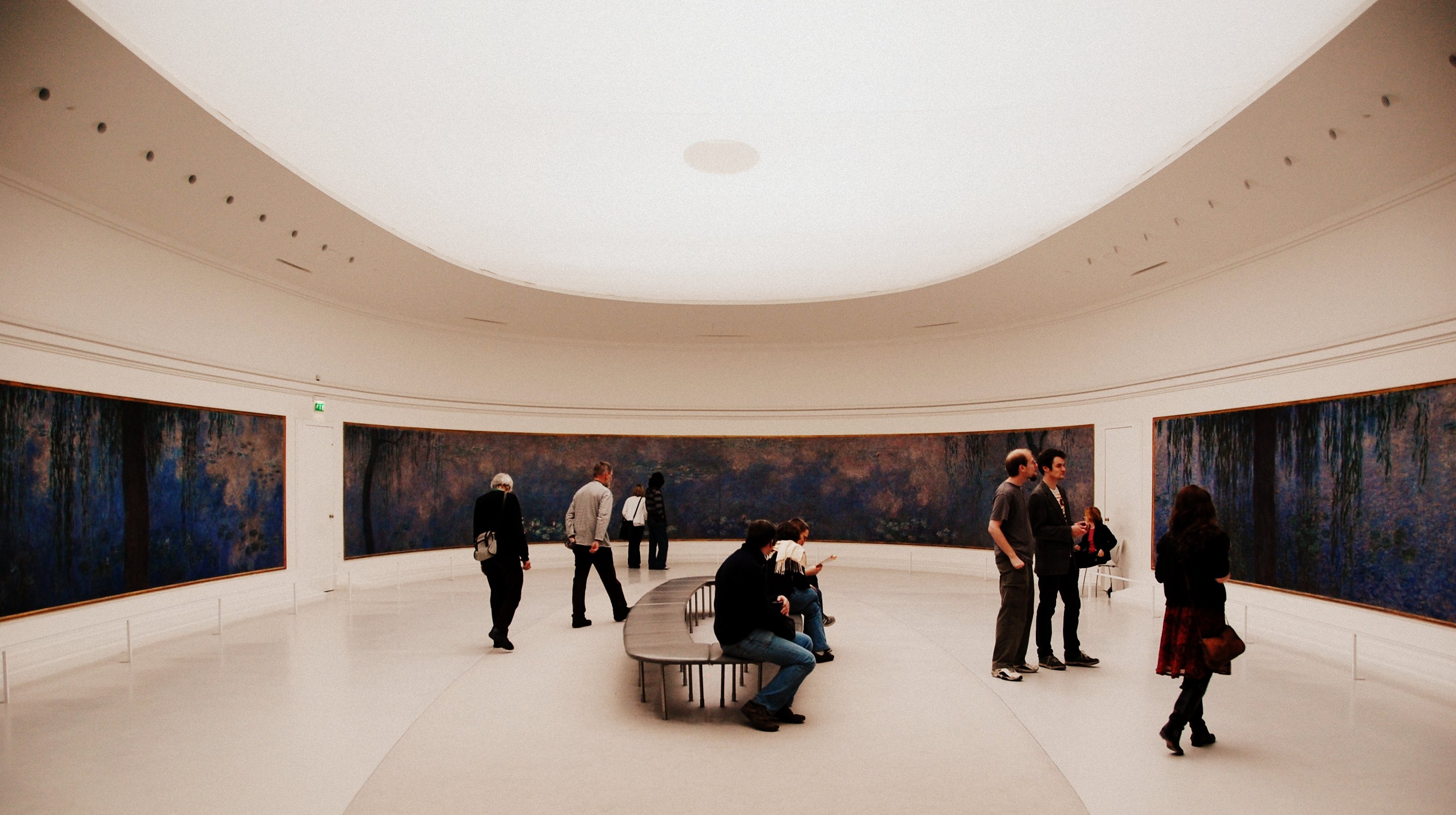
One of Claude Monet’s final works was his Nymphaeas, on which he worked between 1914-1918 when he decided to donate them to France. In 1918, French prime minister Georges Clemenceau signed the Armistice that brought an end to the First World War. Clemenceau was a friend of Monet’s and he offered to exhibit the Nymphaeas in the Orangerie, in the middle of the garden at the Tuileries in Paris. Monet imagined the space: two white, oval rooms in which those last eight paintings of aquatic plants could be viewed and as one approaches the paintings they become almost abstract. He said that he thought of the place as a refuge, a place for escape.
“The nerves, exhausted by work, will relax there, before the reclining example of those becalmed waters and, to those who inhabit it, this piece will offer a refuge for peaceful meditation at the center of a flowery aquarium.”
Monet decided to donate those works to his country as a monument to the peace that had just been signed, and at the same time offered the place as a temple for whoever was seeking internal peace. Both, as Monet well understood, are inseparable.
Rothko’s chapel
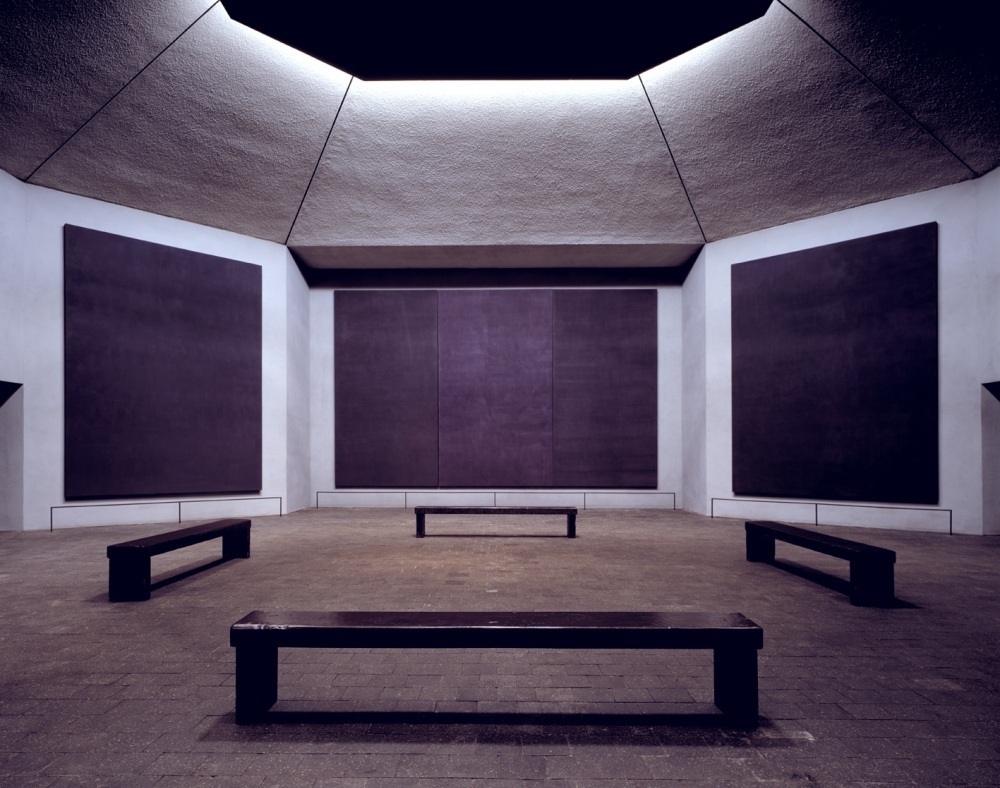
Since 1964, the painter Mark Rothko worked closely with various architects to build a chapel in Houston, Texas. He painted 14 abstract panels for the building that he placed in an octagonal space (just like the Nymphaeas) illuminated by natural light. The chapel, located in a park amid trees with fantastical roots, was inaugurated after Rothko’s suicide and was dedicated to the memory of Martin Luther King. People of all religions flock there to immerse themselves in the abyss of Rothko’s paintings. The black tone of the paintings begs scrutiny; to distinguish between the different shades of black it is necessary to observe them with plenty of time and patience. After a while, the colors begin to enact a kind of hypnosis on the spectator.
Rothko said that, for him, art was an anecdote for the spirit, and the only way to achieve his desire for speed and tranquility. The silence and darkness of the chapel make it an intimate setting, a place for introspection and reflection, but above all a place to experience the sublime, as the Romantics did, to feel the color acting directly on the emotions. That is what interested Rothko: “tragedy, ecstasy and fatality.”
Turrell’s observatory
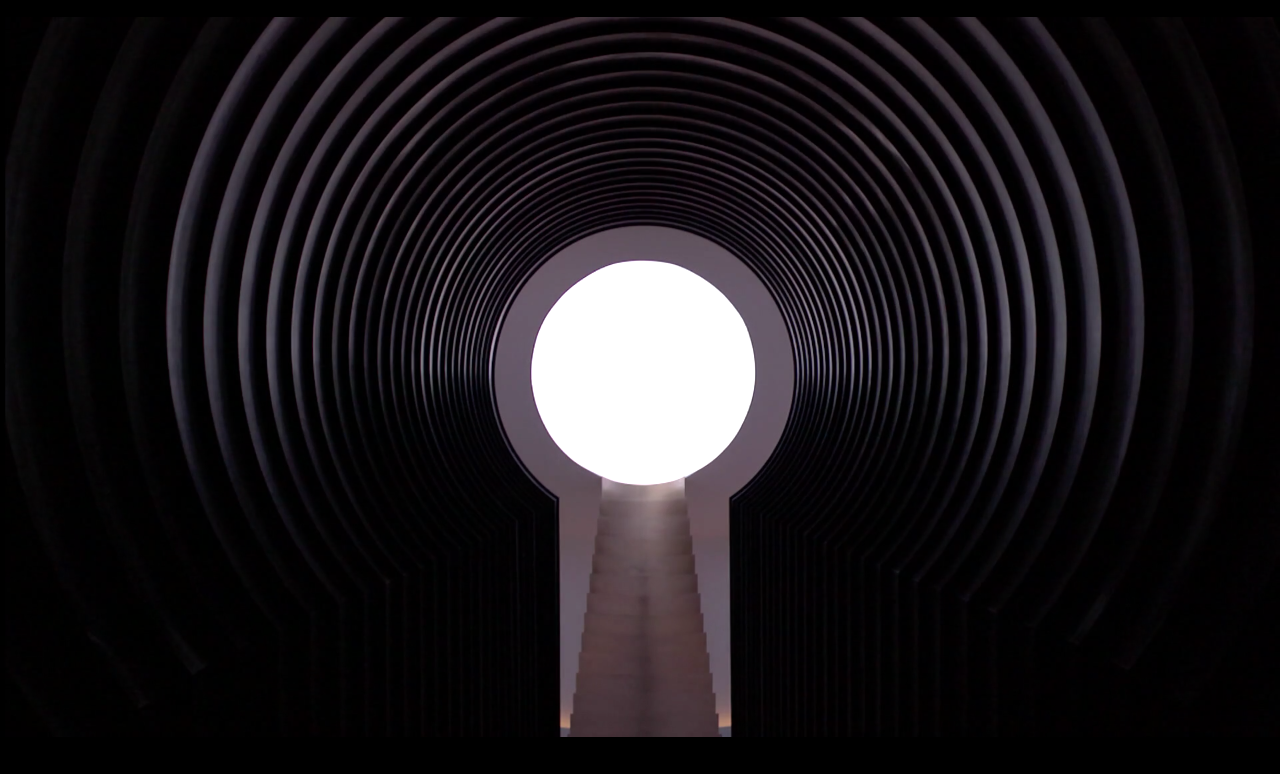
James Turrell has spent his career exploring the different facets of light. In his installations he experiments with the interaction between light and space, between light and color, light and movement. A few years ago, Turrell was granted the support of the Dia Art Foundation to build an observatory.
The Roden Center is located in the cone of an extinct volcano, somewhere between the painted desert of Arizona and the Grand Canyon. The volcano is 4,000,000 years old and is almost 200 meters high.
The idea behind the place, and which is still not finished, is that it will be an observatory from which to watch the celestial movement of the planets, the stars and distant galaxies. Turrell took inspiration from ancient temples, in Borobudur, Angkor, Machu Picchu, and the Mayan and Egyptian pyramids, all constructions with spaces dedicated to the contemplation and adoration of the celestial bodies. Visiting this remote place implies a kind of pilgrimage. Turrell says that he chose it for its geographical position because he wanted a space where he could feel geological time. “I wanted to create spaces that involved the light of celestial movement so that the spaces would reflect ‘the music of the spheres’ in light.” The observatory will have 20 spaces flooded with natural light from different sources and is currently under construction.
Related Articles
When ancient rituals became religion
The emergence of religions irreversibly changed the history of humanity. It’s therefore essential to ask when and how did ancient peoples’ rituals become organized systems of thought, each with their
Seven ancient maps of the Americas
A map is not the territory. —Alfred Korzybski Maps are never merely maps. They’re human projections, metaphors in which we find both the geographical and the imaginary. The cases of ghost islands
An artist crochets a perfect skeleton and internal organs
Shanell Papp is a skilled textile and crochet artist. She spent four long months crocheting a life-size skeleton in wool. She then filled it in with the organs of the human body in an act as patient
A musical tribute to maps
A sequence of sounds, rhythms, melodies and silences: music is a most primitive art, the most essential, and the most powerful of all languages. Its capacity is not limited to the (hardly trivial)
The enchantment of 17th-century optics
The sense of sight is perhaps one the imagination’s most prolific masters. That is why humankind has been fascinated and bewitched by optics and their possibilities for centuries. Like the heart, the
Would you found your own micro-nation? These eccentric examples show how easy it can be
Founding a country is, in some ways, a simple task. It is enough to manifest its existence and the motives for creating a new political entity. At least that is what has been demonstrated by the
Wondrous crossings: the galaxy caves of New Zealand
Often, the most extraordinary phenomena are “jealous of themselves” ––and they happen where the human eye cannot enjoy them. However, they can be discovered, and when we do find them we experience a
Think you have strange reading habits? Wait until you've seen how Mcluhan reads
We often forget or neglect to think about the infinite circumstances that are condensed in the acts that we consider habitual. Using a fork to eat, for example, or walking down the street and being
The sky is calling us, a love letter to the cosmos (video)
We once dreamt of open sails and Open seas We once dreamt of new frontiers and New lands Are we still a brave people? We must not forget that the very stars we see nowadays are the same stars and
The sister you always wanted (but made into a crystal chandelier)
Lucas Maassen always wanted to have a sister. And after 36 years he finally procured one, except, as strange as it may sound, in the shape of a chandelier. Maassen, a Dutch designer, asked the

